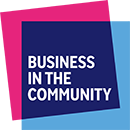Employee Wellbeing Measurement and Metrics
Employee Wellbeing Measurement and Metrics
This is three-part series of toolkits, employee wellbeing, measurement and metrics, supports organisations in improving their approach to employee wellbeing measurement and metrics. Measuring employee wellbeing is essential for any organisation seeking to understand the impact of its approach.
Measurement will help you to:
- demonstrate possible implications of these issues, such as costs in human implications and reputational terms as well as financial ramifications
- determine who is particularly affected by them (for example, a particular demographic group or particular job roles)
- Establish baselines that you can use to measure progress
- establish key stakeholders
- Identify whether there are any issues that you need to address and what they are
- Inform your health and wellbeing strategy
- pinpoint whether there are any “hot spots” of high incidents in the organisation (for example, particular teams or divisions) or areas of good practice, e.g. lower incidence rates
- Put together the business case to challenge and inform your board or executive team
- target interventions and key areas for improvement.
Guide One: Getting Started
This guide is aimed at supporting organisations that are at a relatively early stage of measuring their activity.
It provides an introduction to the Business in the Community (BITC) Workwell Model as a framework to evaluate your approach to health, wellbeing and engagement, and sets out some basic categories to help you classify your activity, in terms of preventative, early intervention, and rehabilitation.
Guide Two: Deepening Your Insights
This guide aims to provide organisations that are already measuring their activity to bring this together in a more strategic approach. It includes an approach for measuring employee engagement, leading and lagging measures and other areas.
Guide Three: Wellbeing Charters, Frameworks, Standards and Benchmarks
This document aims to support organisations that want to gather data via established questionnaires and/or use a framework or standard to chart their organisation’s progress on wellbeing.
It outlines:
- public reporting on employee wellbeing and engagement
- UK and global frameworks, standards and benchmarks for assessment of wellbeing, including mental wellbeing
- UK public ranking and award processes.
About Business in the Community’s work on health and wellbeing
Business in the Community (BITC) defines “wellbeing” as the mutually supportive relationship between an individual’s mental, physical, social and financial health and personal wellbeing.
Taking a whole organisation approach to embedding wellbeing into an organisational culture is key to achieving maximum impact. Wellbeing should be positioned as a strategic boardroom issue supporting thriving people, businesses and communities.
Next step: contact Business in the Community’s Advisory Service Team
Business in the Community’s (BITC) Wellbeing Advisers can support your organisation in developing and implement effective health and wellbeing strategies. Working with you, we can analyse employee data, provide guidance on improvements and guide practical training sessions to support your senior leaders, line managers and employees to drive lasting change. The result is an environment where employees feel supported to do their best work.
Contact our Advisory Service Team to find out more.
